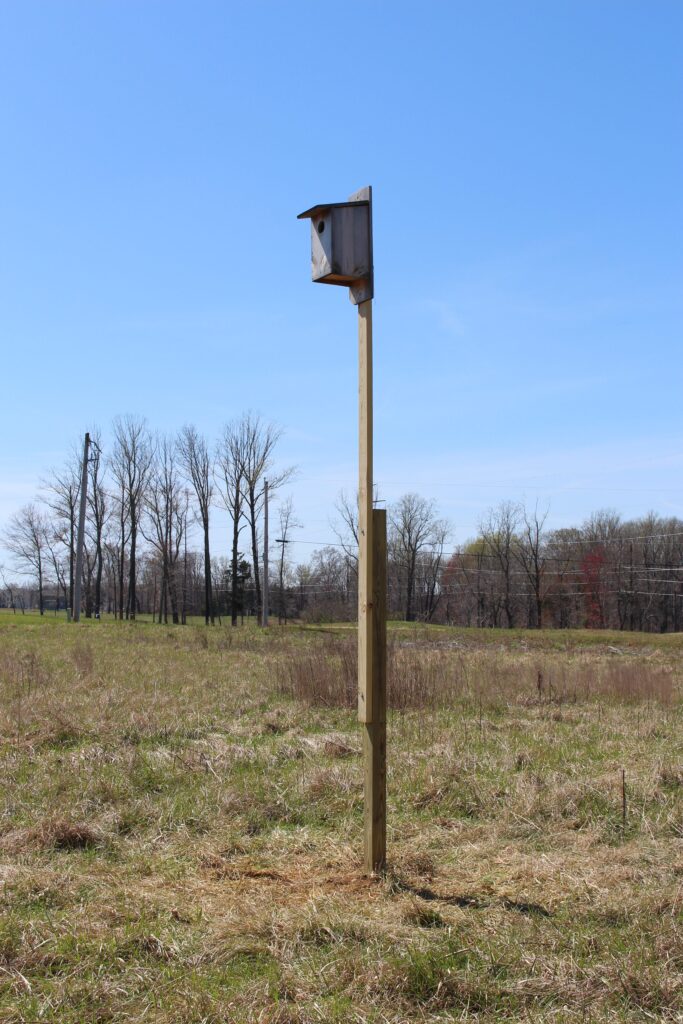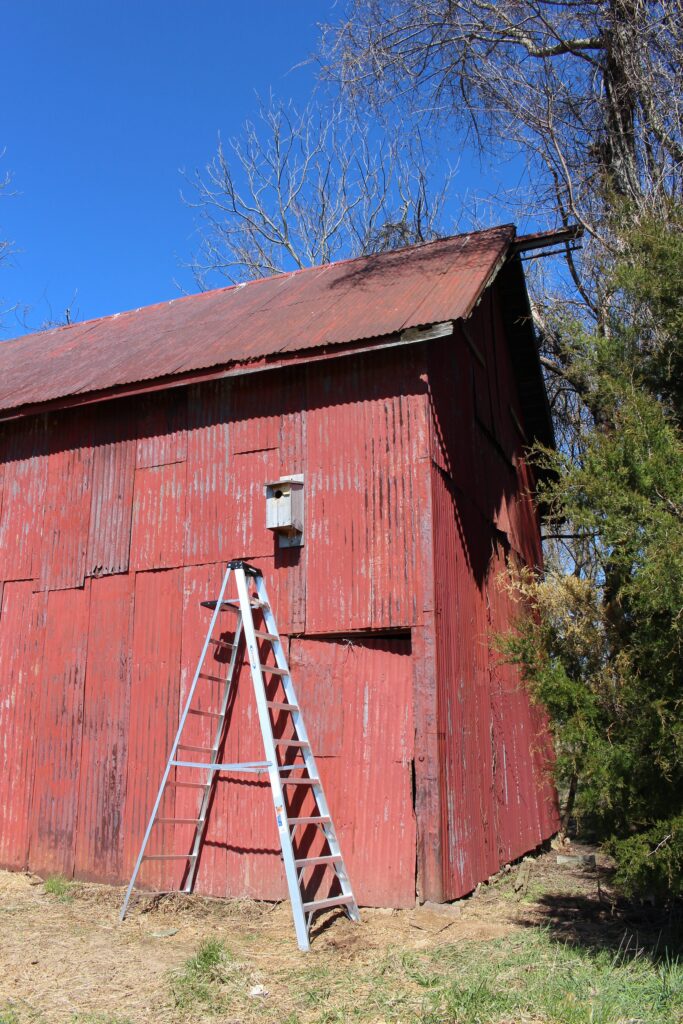KEYS TO SUCCESS
Sighting Kestrel Nest Boxes
Through our various contacts and conversations with staff at the Peregrine Fund, with DE Fish and Wildlife, with members of the American Birding Association and Delaware Ornithological Society, and with Tri-State Bird Rescue, we have developed at this time a typical protocol for appropriately sighting Kestrel boxes.
SUCCESSFUL SITES
We believe that the following site features will lead to successful habitation of the boxes by Kestrels:
- Boxes should be sighted in an open field with moderate height, diverse vegetation; too tall and they are unable to hunt the deep vegetation, too short or non-diverse and appropriate dietary prey may not be found.
- Kestrels are primarily insectivores in the summer, but shift opportunistically to rodents or small birds in the off seasons when invertebrates are not readily available, so boxes should be sighted where appropriate foraging can be easily found.
- Cooper’s and Sharp Shinned Hawks are primary predators of Kestrels, so boxes should be sighted at least 50 yards, but preferably 100 yards from tree-lines to avoid hazards of predation by these birds which will roost and hunt from tree lines.
- Kestrel boxes should be sighted within range (again, 50-100 yards) of power/phone/cable lines, if possible, due to the Kestrel’s preference for perching on them while hunting. Sighting boxes directly on telephone poles may be ideal, if the poles are owned by the landowner.
- While farm fields may be ideal for boxes, only fields not using herbicides or insecticides should be used for nest sites. Additionally, farmers may not want to mow/plow around boxes in the center of their fields, so working with landowners for sighting on hedgerows may be a best practice. This may include sighting boxes along driveways which have power poles and lines running up the road and placing a box on a pole.
- The 2012 Bird Breeding Atlas noted Kestrels in only 61 observation blocks, down from 156 blocks in the previous Atlas in 1987. Sites found with confirmed nesting activity were around Brandywine Creek State Park, St. George’s, Milford, Milton, Seaford and Wilmington. These sites will be the foremost focus, but also sites of confirmed observations from the 1987 Atlas will be monitored.
- We additionally will use sightings reported by birders on eBird to site boxes where kestrels have recently been observed.


